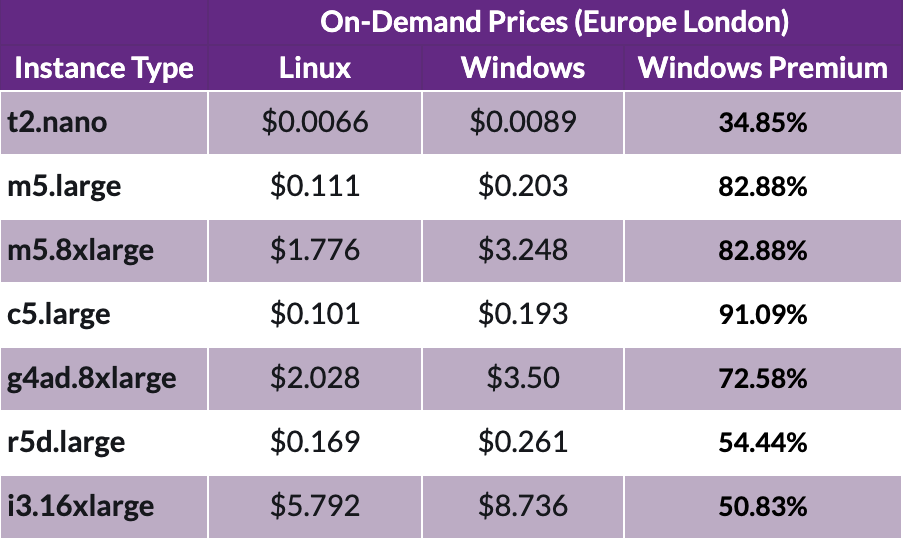How to Reduce Amazon EC2 Costs – part 2
Welcome back to part 2 of our series on “How do I reduce my Amazon EC2 costs?". Last time we covered the areas that will usually deliver the quickest...
2 min read
Sam Phillips : Jun 16, 2021 1:05:59 PM
When Savings Plans debuted in late 2019, they instantly changed the incentives for using Reserved Instances in AWS cost optimisation strategies. Prior to Savings Plans, both Standard and Convertible RIs had been viable ways to reduce AWS spend. But the added convenience of Savings Plans — which apply discounts automatically without the need to perform any exchanges or make any modifications — quickly made Standard Reserved Instances obsolete. What about Convertible Reserved Instances, though?
The short answer: Convertible EC2 Reserved Instances still provide significant value. Going a bit deeper, they’re valuable because of their exchangeability, as well as the option to perform term and size optimisations on them. Overall, Savings Plans and Reserved Instances can be interwoven into a powerful combined discount strategy, given that you have access to the proper tools and expertise for managing both of them. (Click here to see how to purchase a reserved instance.)
In almost any situation, Standard Reserved Instances aren’t worth considering. So let’s focus on Convertible Reserved Instances and how they stack up against newer Savings Plan options from AWS.
Just to quickly review, a Convertible Reserved Instance is an exchangeable billing discount that also offers full-upfront, partial-upfront or no-upfront purchase options like both Standard RIs and Savings Plans). Unlike a Standard Reserved Instance, they allow you to swap out Reserved Instances of different instance families, OSes, and tenancies. This flexibility is useful, as AWS introduces new instance types all the time, and workload requirements frequently change.
Compared to a Savings Plan, a Convertible Reserved Instance doesn’t offer the same level of out-of-the-box convenience. The discounts in Savings Plans are highly automated and don’t require committing to specific instance types upfront, while still offering cost reductions as high as 72% compared to On Demand pricing. In many cases, it’s prudent to let existing AWS Reserved Instances expire and then replace them as needed with Savings Plans.
That said, Convertible Reserved Instances aren’t going away anytime soon, and it will be important to implement a discount strategy that can optimise them in tandem with Savings Plan usage. Why will Convertible RIs stick around? For starters, they offer term and size optimisation, which yield tremendous flexibility.
Over the years, Tecflair has honed its processes for “squashing” and “expanding” the terms of Convertible Reserved Instances, and we have matched these options with ProsperOps for automated Savings Plan/Reserved Instance management and customisable solutions, such as the Tecflair Dashboard, to provide granular insight into and control of both Reserved Instance and Savings Plan utilisation. Through this combination of techniques and tools, you can ensure that your Convertible Reserved Instances are always delivering the most value for your current AWS footprint.
Without such targeted optimisation, it can be difficult to keep up with the ongoing changes across your entire EC2 portfolio. As cloud savings company ProsperOps noted the month before Savings Plans were unveiled, ad hoc scripts and standard reporting tools are not enough for efficiently managing Convertible Reserved Instances at scale — hence the rise of algorithmic forecasting and management.
It’s worth pursuing every avenue for Reserved Instance optimisation since Savings Plans are not 1-to-1 replacements for Reserved Instances just yet. Savings Plans still only cover EC2, Fargate, and Lambda as of September 2020, meaning that Reserved Instances for products like Redshift don’t have Savings Plan counterparts. Unlike Savings Plans, Reserved Instances can also be offloaded, and Convertible RIs have term flexibility, which is missing from Savings Plans.
Looking ahead, a systematic approach to AWS Reserved Instances — one that incorporates term and size optimisation as well as a toolset that’s broader than AWS Cost Explorer — will be essential for creating a combined Savings Plan-Reserved Instance Discount Strategy that reliably controls your AWS costs. To learn more about how to manage your reserved instance portfolio check out another blog article of ours here.

Welcome back to part 2 of our series on “How do I reduce my Amazon EC2 costs?". Last time we covered the areas that will usually deliver the quickest...
Savings Plans vs Reserved Instances Back in October 2019, AWS introduced Savings Plans, and a belief that Reserved Instances are dead began.
Although lockdowns related to the COVID-19 pandemic sharply reduced economic activity in many sectors — think the dramatic, immediate declines in...